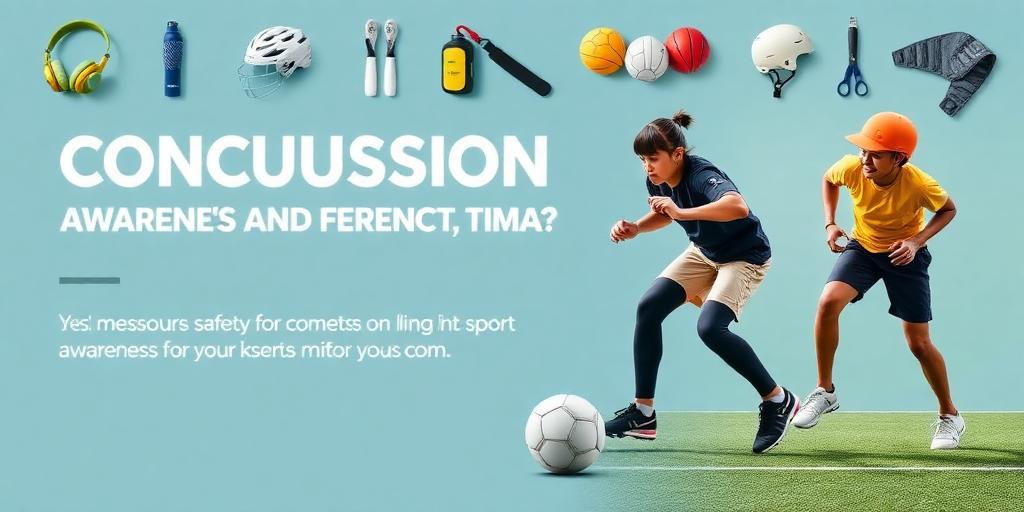Concussion Awareness and Prevention in Sports
Introduction Concussions are a significant concern in sports, affecting athletes of all ages and skill levels. A concussion is a type of traumatic brain injury (TBI) caused by a bump, blow, or jolt to the head or by a hit to the body that causes the head and brain to move rapidly back and forth. Understanding the risks, symptoms, and prevention strategies is crucial for ensuring the safety and well-being of athletes.
What is a Concussion? A concussion is a mild traumatic brain injury that can change how the brain normally works. Concussions can occur in any sport or recreational activity. It's important to recognize that you don't have to lose consciousness to have a concussion. In fact, most people who experience a concussion do not lose consciousness.
Symptoms of a Concussion The symptoms of a concussion can vary widely from person to person and may not be immediately apparent. Common symptoms include:
Headache Confusion Memory problems Balance issues Vision disturbances Nausea or vomiting Sensitivity to light and noise Slowed reaction times Changes in mood or behavior
It’s critical to seek medical attention if any of these symptoms are present after a head injury.
Risk Factors in Sports Certain sports have a higher risk of concussion due to the nature of the activity and the potential for collisions. These include:
Football Hockey Soccer Basketball Lacrosse
However, concussions can occur in virtually any sport or recreational activity. Factors such as player size, skill level, and protective equipment can also influence the risk of concussion.
Prevention Strategies Preventing concussions involves a multi-faceted approach that includes education, proper equipment, and rule enforcement.
Education: Athletes, coaches, and parents should be educated about the risks of concussion, how to recognize symptoms, and proper reporting procedures.
Proper Equipment: Wearing appropriate, well-fitted protective gear, such as helmets and mouthguards, can help reduce the severity of head injuries. Ensure that equipment meets safety standards and is properly maintained.
Rule Enforcement: Enforcing rules that promote player safety, such as those against head-to-head contact, can help reduce the incidence of concussions.
Proper Technique: Teaching and practicing proper techniques for sports activities can minimize the risk of head injuries. This includes techniques for tackling, blocking, and avoiding collisions.
Baseline Testing: Baseline testing involves assessing an athlete's cognitive function before the start of the season. This provides a reference point for comparison if a concussion is suspected.
Immediate Action and Management If a concussion is suspected, the following steps should be taken:
Remove the Athlete: Immediately remove the athlete from play or practice.
Seek Medical Evaluation: The athlete should be evaluated by a healthcare professional experienced in concussion management.
Rest: Physical and cognitive rest is crucial for recovery. This may involve limiting screen time, schoolwork, and other mentally demanding activities.
Gradual Return to Play: A gradual, stepwise return-to-play protocol should be followed under the guidance of a healthcare professional. This involves gradually increasing activity levels while monitoring for symptoms.
Conclusion Concussion awareness and prevention are essential for protecting athletes and promoting their long-term health. By understanding the risks, recognizing the symptoms, and implementing effective prevention strategies, we can create a safer sports environment for everyone.









